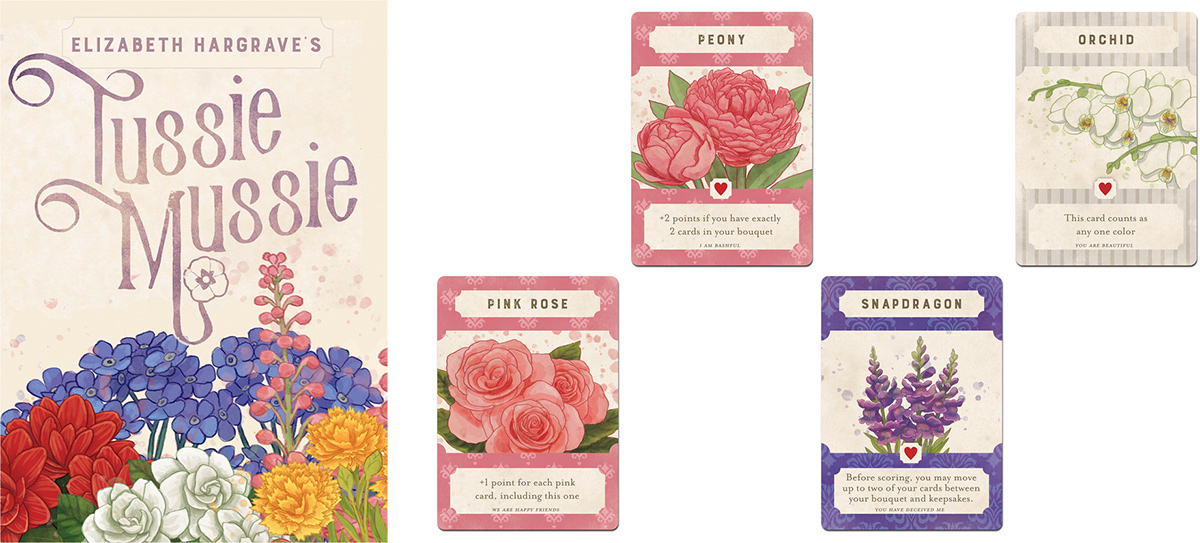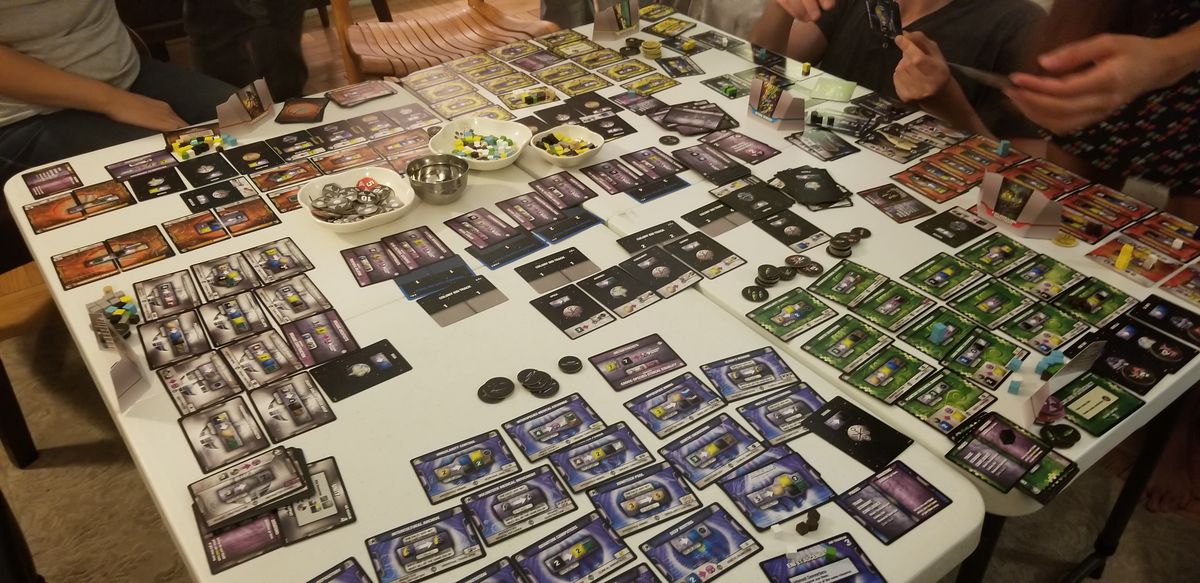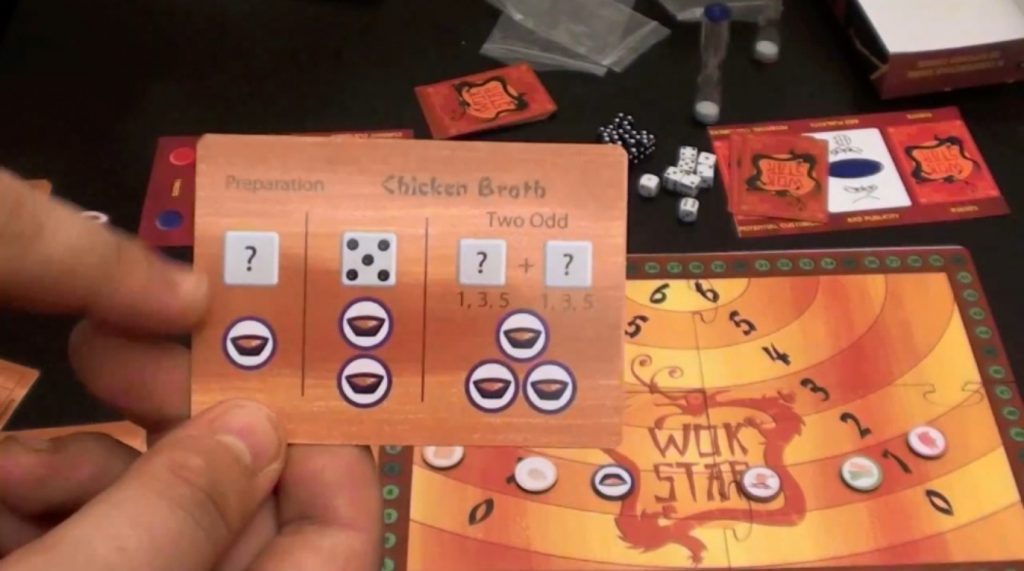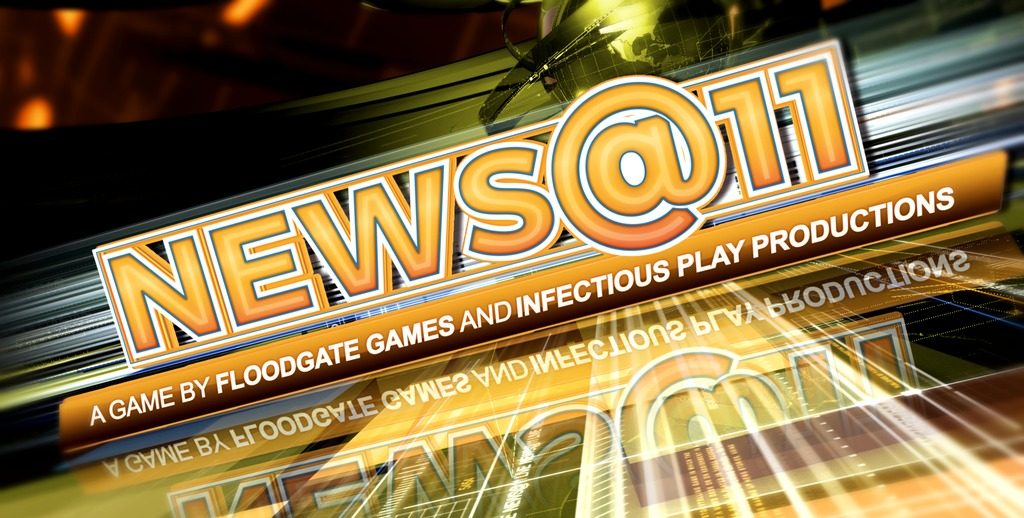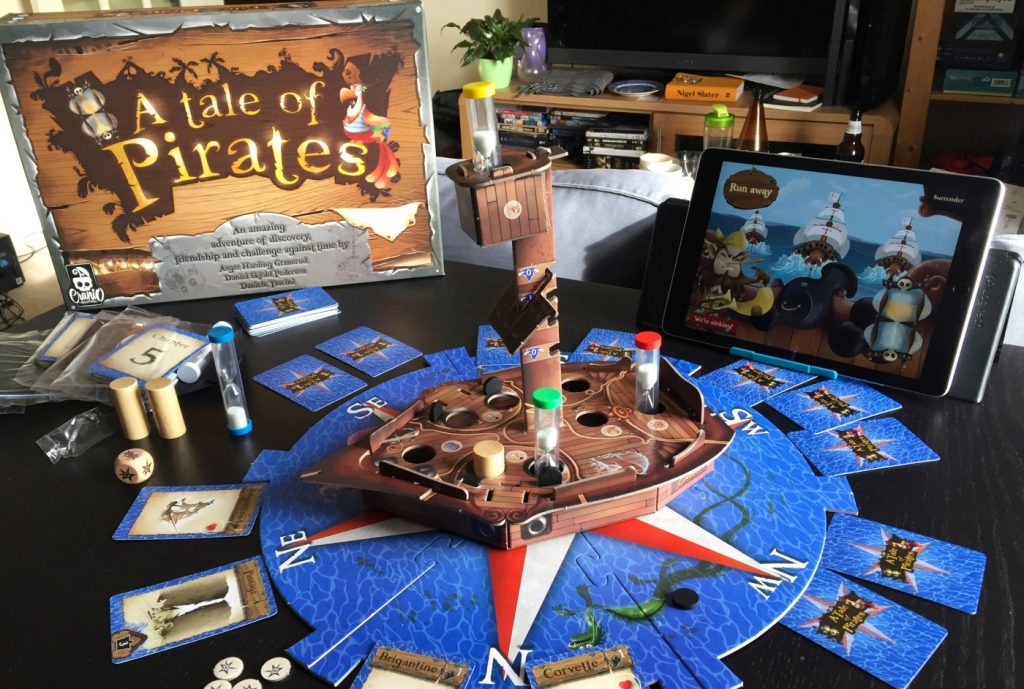Ava: Welcome back to our weekly dive into the pages of the Shut Up & Sit Down Chronicle. Only the hottest news makes the pages of your most finger-smudging paper, guaranteed.
Quinns: In hindsight, I really don’t know why chose that as our promise.
Ava: It’s only natural to want to leave a mark.
Quinns: Groan.
Ava: This week we’re taking a deeper dive than usual into the opinions section, as well as some of those grubby adverts in the back.
Which is to say, today’s news is mostly think-pieces and kickstarters, and we think that’s okay.
Let’s open the paper to a pretty little kickstarter that’s already blooming beautifully. Tussie Mussie is the latest little treat from Button Shy, specialists in wallet sized micro games, collaborating with Elizabeth Hargrave. Elizabeth is currently under the hype spotlight thanks to the inordinate excitement flitting around beatific bird-box Wingspan.
This game looks just as pretty, with Beth Sobel taking illustration duties for an ‘I cut, You choose’ game about the Victorian language of flowers. The cards are beautiful, and it’s already smashed right through it’s target. Does anyone know the Victorian flowers for ‘congratulations on your kickstarter success’?
Quinns: I’m loving the look of this! Also, can anyone in the comments recommend other Buttonshy games to add to a Tussie Mussie pledge? I’m a little overwhelmed:
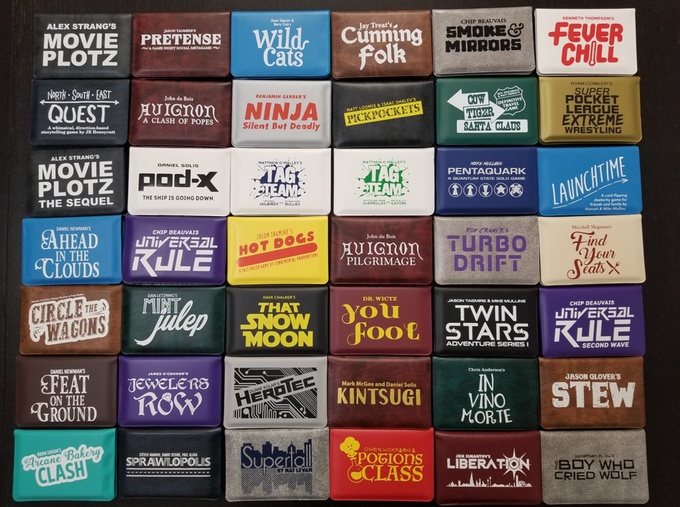
Ava: Ooh, I’m very curious what designers come up with in response to the specific constraints of an 18 card wallet game.
Quinns: Hmm. Sorting their games by rank on their BoardGameGeek page reveals some slick little packets. Sprawlopolis is their biggest hit and it looks ace, but I’m particularly intrigued by the theming of Stew, a game of players drafting veggies, fearful of varmints.
Ava: Personally, I’ve no idea how you made it past ‘A Clash of Popes’.
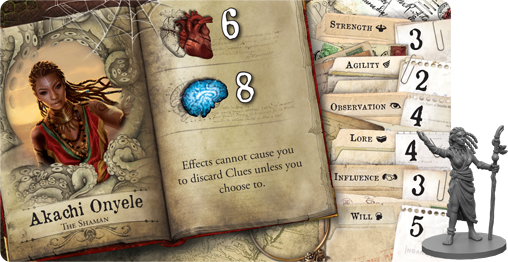
Ava: It makes sense to flick the page from Elizabeth Hargrave’s successes to Erin K Wagner reflecting on an old Geek & Sundry interview with the women and non-binary folk who wrote Mansions of Madness 2nd Edition. I’m already sold on anyone who is bringing D&D and the author bell hooks into the same paragraph, and there’s a lot of interesting threads to pull on. I know that Ursula LeGuin’s ‘carrier bag theory of fiction’ has jumped to the top of my reading list once we’re done newsing.
Sadly, within moments of reading the above, I stumbled across this bleak but necessary piece by Nicole Hoye, of Daily Worker Placement and Greatway Games, on harassment in board game scenes. It’s worth reminding everybody we play with that it’s our responsibility to make game spaces welcoming. Whether you think there’s a problem at your table or not, this should be required reading. It’s easy for this stuff to not be noticed by those who aren’t directly affected. Don’t rest on laurels, folks, we have to keep working and fighting until everyone feels at home in every game space (except, paradoxically, those people who think we shouldn’t fight for everyone to feel at home, who should not be welcome).
Quinns: I earnestly believe that things are getting better for women and minorities within the board game conventions that I go to, but it’s very difficult to celebrate that without slipping into complacency. I remember the shock I felt when a woman almost left one of my Netrunner tournaments. I was convinced that my attendees were all nice enough- it was the textbook definition of “ignorance is bliss”.
Ava: Nicole lists some resources for ways you can intervene helpfully and be a decent ally, which I think are great. Even if you’re already nice, it’s worth taking a look at this, it’s definitely hard to be too nice, and very easy to not realise when your niceness isn’t enough.
Quinns: Nice.
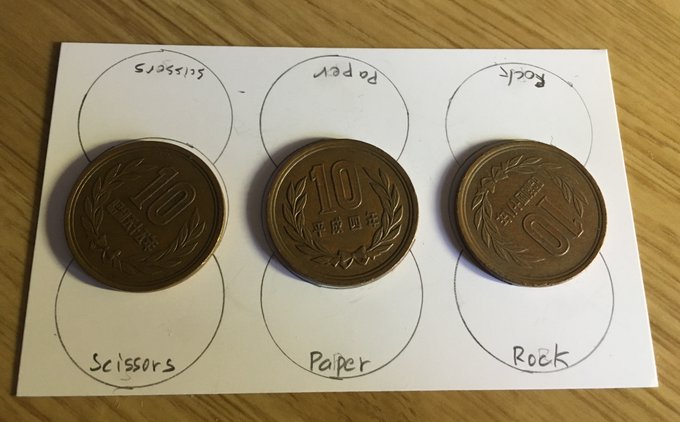
Ava: I’m always curious about new ways of spinning old ideas. Yuji Kosugi managed to stop me in my tracks the other day, posting a single tweet variant on Rock Paper Scissors. It’s a simple way to record victory between multiple rounds, that requires you to think about your play in a number of different ways. I’ve no idea if it would actually be fun, but my word is it thrilling that someone could chuck that big a wrench into a game that small. What a delight! I love a little thought experiment, and this is one I could actually play.
Quinns: On the subject, I found out at the UK Games Expo this weekend that the Japanese table gaming scene is growing at a huge rate, and I couldn’t be more excited. There’s an incredible amount of lateral thinking on show in the games that are being designed in Japan. I managed to acquire a copy of the matchbook-sized Yeti in the House on Sunday and I’ve been showing it to just about everybody.
Ava: I look forward to meeting this tiny imported Yeti.
Quinns: Ava
Ava: Yes?
Quinns: Ava
Ava: What is it?
Quinns: The yeti is so small
Quinns: I got a little thrill from our inbox this week, when reader Reid Delfield pointed us towards a BoardGameGeek thread in which TauCeti Deichmann, the designer of preposterously overblown space trading game Sidereal Confluence, expounds on the nine alien factions included in the box.
Ava: I am awed to see that the lore runs so deep and ties in with the design so crunchily. The asymmetry of that game is a treat, and it’s nice to know it was never just mechanical.
TauCeti is working on an RPG in the universe which does explain how there’s quite so much backstory. I’m curious as to how far down this universe goes, and the peaceful but diverse setting could house some very strange stories.
Quinns: I’m a bit baffled as to how an RPG might work. I’d struggle to roleplay a compassionate squid, let alone an intelligent wasp or a *cloud of maths.*
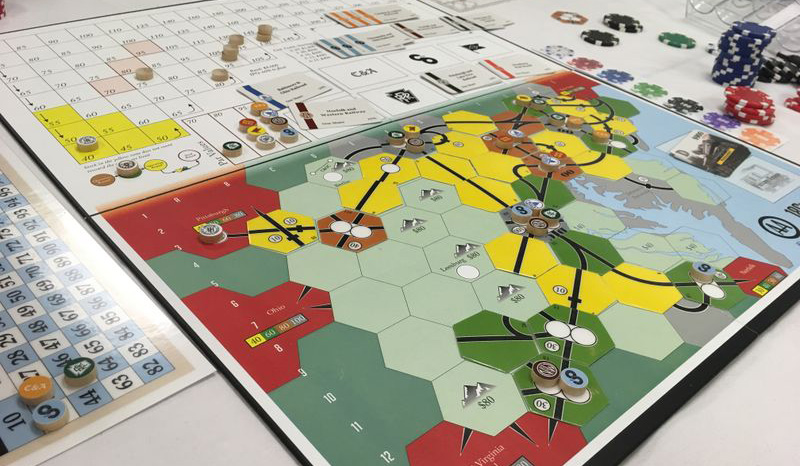
Ava: Speaking of diving deep into weird designs, Gloomhaven’s Isaac Childres has reported back from Heavy Cardboards ‘Heavycon’ with some thoughts on why the 18xx genre of stock trading train games are so exciting (except when they aren’t). I’m always dazzled to remember that there’s a whole subculture of board games I’ve yet to probe, and I’m so, damn, curious. I don’t shy away from a heavy game, but something about the intersection of share-holding, day long games, elaborate tile placement and route building really daunts me.
Quinns: Ack, I loved this blog post. I’ve wanted an outsider to give an overview of this impenetrable genre for some time, and having Isaac alternately expressing love and hilarious criticism was just lovely.
Ava: I’m now a bit sad that I ummed and ahhed about adding the Kickstarter for 18Chesapeke to the games news for the last few weeks. The combination of curiosity and fear pushes me right down the railroad of indecision.
Quinns: Calling at Hesitancy, Ambivalence, Reluctance and Lower Maybeton.
Ava: Toot Toot.
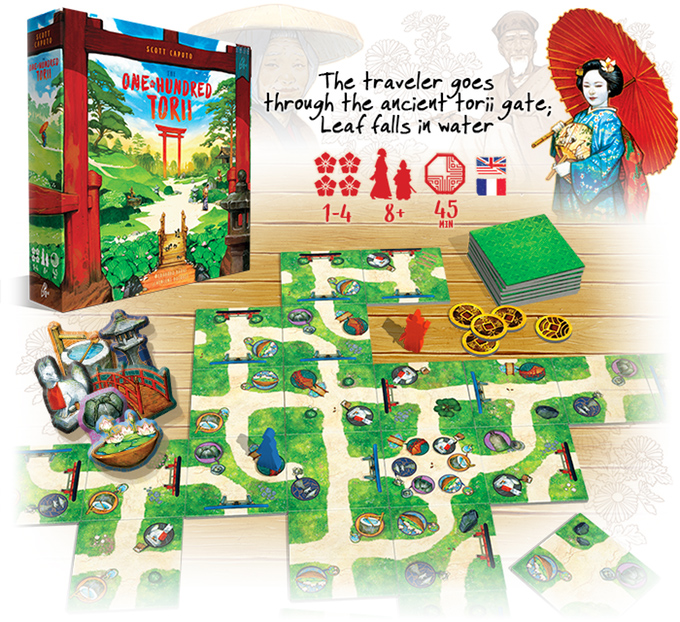
Quinns: Finally, why don’t we close with one more Kickstarter. The One Hundred Torii is a gorgeous-looking collaboration by Scott Caputo, Vincent Dutrait and Eduardo Baraf about placing tiles to expand a garden and walking little wooden figures around it. Which is a winning combination, if Isle of Skye: Journeyman proved anything.
Ava: Eduardo Baraf worked on Herbaceous, which is a great little game I’ve taught a huge range of people. The beautiful herbs, and my elaborate headcanon about a group of flats with a shared community garden and an incredibly strict residents association make it a sweet smelling joy.
The route building in 100 Torii could be like a more fiddly and/or nuanced counterpart to Tsuro, where you’re trying to get in someone else’s way while making a nice path for yourself. Or maybe a less snide Saboteur?
Quinns: Gosh, games are getting more and more pleasant theming, aren’t they? I wonder if future generations of tabletop gamers will look back at the ‘90s and ‘00s as a brutal time, staggering under the weight of rayguns and scimitars.
Ava: I feel like the games that have stood the test of time from that era are mostly sad men and beige countryside.
Quinns: I do love a good beige game.
Ava: I just hope that’s not because you’re a sad man.

